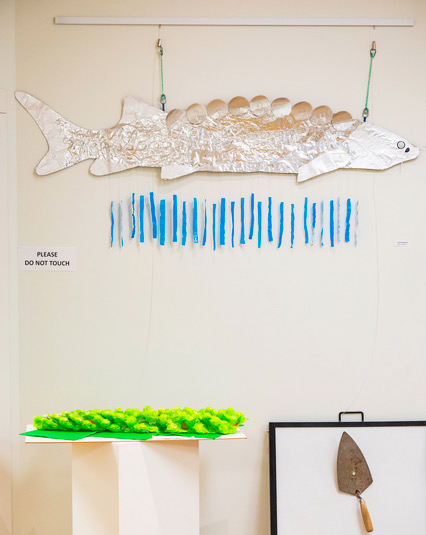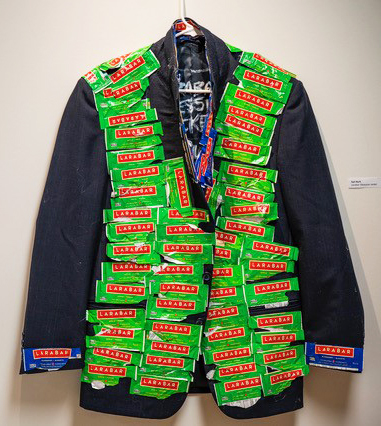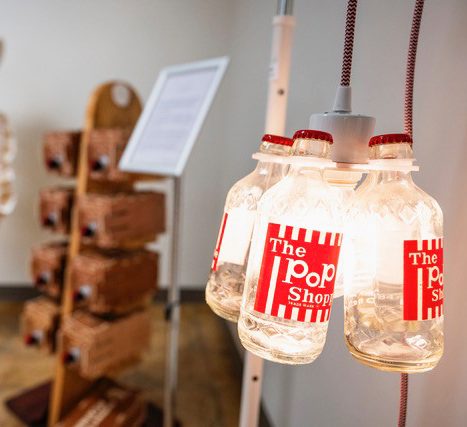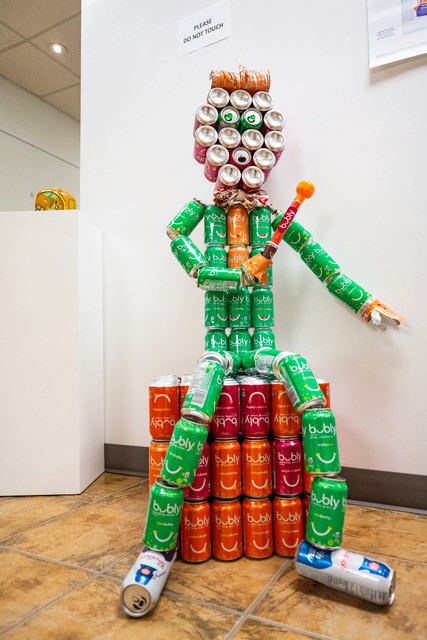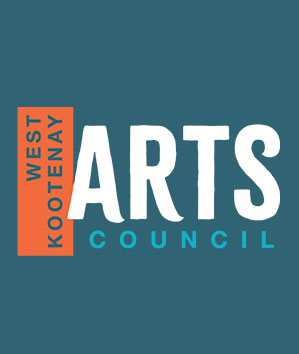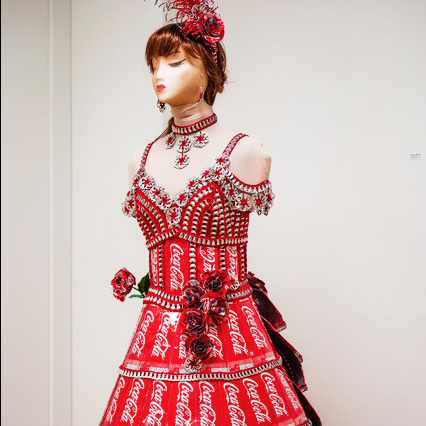Food packaging art challenge a success
We have two winners!
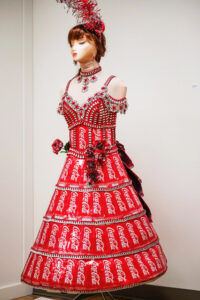
In collaboration with us at the WKRAC and the Tilted Brick Gallery, the Basin Food & Buyers Expo—held in Creston on November 3 and 4, 2023—put out a unique call to artists: submit original creations made of food packaging, exploring the theme of food packaging, or offering food packaging designs.
All the entries were amazing, and displayed for a couple of weeks at Creston’s Tilted Brick Gallery. In the end, a locally assembled jury selected two as our winners.
Congratulations to first-place winner Shirley McLim for “Madame Cola – Can Can Dress,” who comes away with $1,000; and to second-place winner Jess Stacey for “Processing Apron,” who comes away with $500. The challenge and prizes were supported by Columbia Basin Trust.
The Madame Cola – Can Can Dress is made of 215 Coke tins—hole-punched to create a sewing connection and cut to make items like roses—and countless tabs crocheted together. Shirley McLim said the following about it:
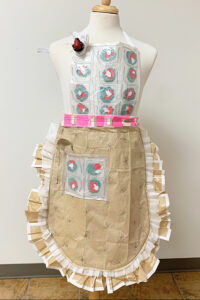
“Madame Cola appears to have a cold exterior with an icy soul, but don’t let her colourful past stop you from approaching her. Her sassy personality will draw you in with her addictive sweetness that will leave you wanting more. I love colour and a challenge, so the vibrant red Coke tins beckoned me. The challenge was to turn Coke tins into a fabric-like medium to create this wearable dress. The bustle unhooks and the back laces up so one can slide it off and on.”
The second-place creation, “Processing Apron,” is a work of mixed-media wearable art made with items from the packaging processes of Creston farmers and food producers that would otherwise have been waste. Jess Stacey said the following about it:
“Less packaging means more kitchen work. When compared to the ready-to-eat food products that often come in substantial packages, the less-processed whole food alternatives ask more of the consumer. They invite us to spend more time cooking, preserving and essentially doing our own food processing at home. What we exchange for convenience is an investment of effort and an interest in the path that our food takes to arrive on our plate.”
Here are a few photos of other entries:
